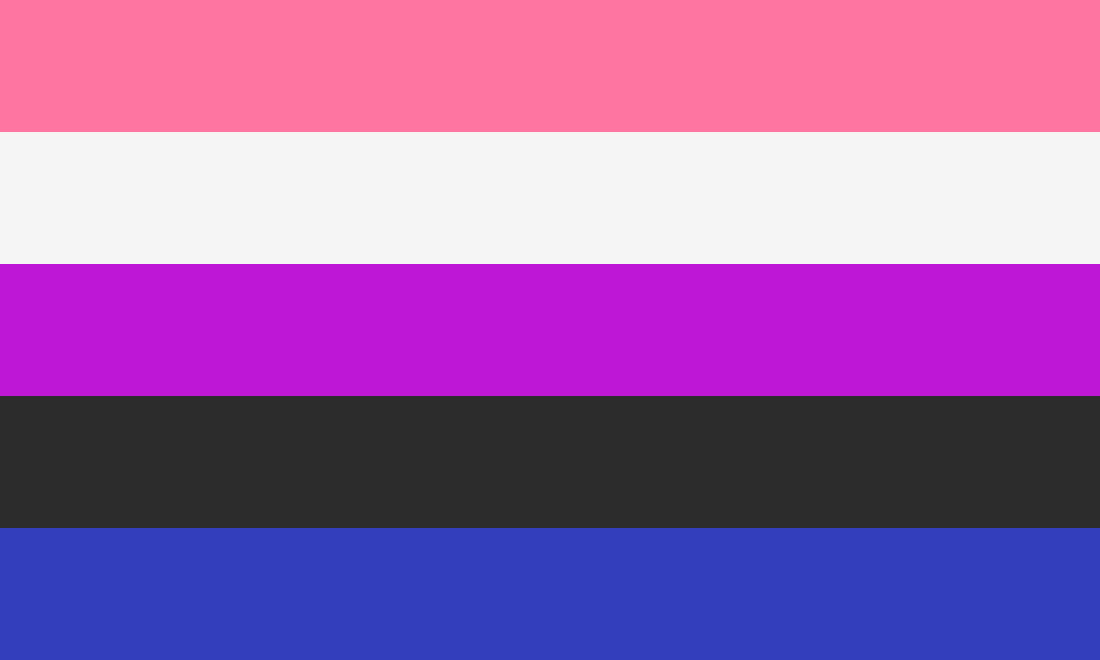Gender fluidity (commonly referred to as genderfluid) is a non-fixed gender identity that shifts over time or depending on the situation. These fluctuations can occur at the level of gender identity or gender expression. A genderfluid person may fluctuate among different gender expressions over their lifetime, or express multiple aspects of various gender markers simultaneously.[1][2] Genderfluid individuals may identify as non-binary or transgender, or cisgender (meaning they identify with the gender associated with their sex assigned at birth).[3][4]
 The genderfluid pride flag | |
| Classification | Gender identity |
|---|---|
| Abbreviations | GF |
| Parent category | Non-binary |
Gender fluidity is different from gender-questioning, a process in which people explore their gender in order to find their true gender identity and adjust their gender expression accordingly.[5] Gender fluidity continues throughout lives of genderfluid people.[6]
History
Transgender people (including non-binary and third gender people) have existed in cultures worldwide since ancient times. The modern terms and meanings of "transgender", "gender", "gender identity", and "gender role" only emerged in the 1950s and 1960s.[7][8][9] As a result, opinions vary on how to categorize historical accounts of gender-variant people and identities, including genderfluid individuals.
The 1928 Virginia Woolf novel Orlando: A Biography features a main character who changes gender several times, and considers gender fluidity:
In every human being, a vacillation from one sex to the other takes place, and often it is only the clothes that keep the male or female likeness, while underneath the sex is the very opposite of what it is above.[10]
The first known mention of the term gender fluidity was in gender theorist Kate Bornstein's 1994 book Gender Outlaw: On Men, Women and the Rest of Us.[11] It was later used again in the 1996 book The Second Coming: A Leatherdyke Reader.[12]
Symbols
The genderfluid pride flag was designed by JJ Poole in 2012. The pink stripe of the flag represents femininity, the white represents lack of gender, purple represents androgyny, black represents all other genders, and blue represents masculinity.[13][14]
See also
References
Further reading
Wikiwand in your browser!
Seamless Wikipedia browsing. On steroids.
Every time you click a link to Wikipedia, Wiktionary or Wikiquote in your browser's search results, it will show the modern Wikiwand interface.
Wikiwand extension is a five stars, simple, with minimum permission required to keep your browsing private, safe and transparent.
